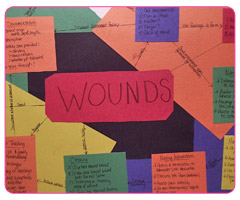Using Concept Maps for Interactive and Effective Active Learning Strategies
 A visual learning tool, the concept map (CM) is an interactive and effective active learning strategy that can be used in a variety of educational settings, including the clinical site and classroom that encourages student decision making and priority setting.
A visual learning tool, the concept map (CM) is an interactive and effective active learning strategy that can be used in a variety of educational settings, including the clinical site and classroom that encourages student decision making and priority setting.
Using concept maps requires the student to be an active participant in the learning activity and requires the use of critical thinking, organizational skills, analysis of the information, and application to previously learned knowledge.
Used to organize information, the concept map often has a hierarchical structure which helps students examine their thoughts and actions as they relate it to the care of the client and the nursing process.
I found that researching disease processes and physically creating concept maps allowed me to easily learn pathways of progression, signs and symptoms, and nursing interventions related to any illness. Concept mapping was a perfect tool for me because it prefer visual and kinesthetic learning styles. Concept mapping taught me how to research disease processes, map and predict symptomology, understand the progression of illness, and plan nursing treatment modules. Former student – Karen Crawford, RN.
Because concept maps represent a picture of what’s in the student’s mind, they are unique creations that more or less represent reality. They represent what the student thinks is reality so it may or may not be correct and becomes a valuable tool for teachers to use to evaluate the student’s thinking.

